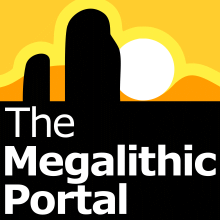The Spiral of Interpretation: Thoughts on constructing narratives using precise chronologies - Susan Greaney (Cardiff University/English Heritage)
It is now ten years since the publication of the chronologies of early Neolithic long barrows project (Bayliss and Whittle 2007), which can be credited with bringing to wide attention the possibilities of using Bayesian analysis of radiocarbon dates to produce robust and precise chronological models. Since then, the methodology has been applied widely in British and Irish archaeology, initially to the early Neolithic and more recently to other periods such as the Iron Age and Anglo-Saxon. A recent volume of World Archaeology (Pettit and Zilhao 2015) was dedicated to reviewing the rapid spread of Bayesian approaches and reflected concerns from a number of period experts and dating specialists that flawed models were being published and uncritically accepted by the wider discipline. In particular, the responsibility of archaeologists in rigorously selecting and clearly justifying the archaeological samples and their association information (priors) was highlighted, and the need for archaeologists and statisticians to work together to refine and model alternative interpretations of the archaeological evidence was emphasised. This paper takes the critique one step further, particularly discussing how these models affect the sort of narratives that we construct for the past and what they can mean for the ‘hermeneutic spiral’ of understanding.
The late Neolithic henge monument of Mount Pleasant in Dorset will be used as an example in this discussion, with an exploration of previous theoretical narratives of this monument and how they relate to our changing understanding of the chronology of the site. ‘Events’, such as the start and end of construction of a monument, or duration of use of a cemetery, are the easiest questions to define, but are they our only research questions? What about the rates of change and the tempo of processes? How easy is it to compare between sites or map changes in material culture? Similarly, once Bayesian models are published, how are these being used in the construction of archaeological narratives? Are our discussions of human agency, memory and history becoming more nuanced to reflect the new precision? Archaeologists have a responsibility to use the models from these dating projects responsibly and wisely, with a good understanding of the methodologies behind them.
https://youtu.be/y1wDq_NyfP0
Something is not right. This message is just to keep things from messing up down the road
